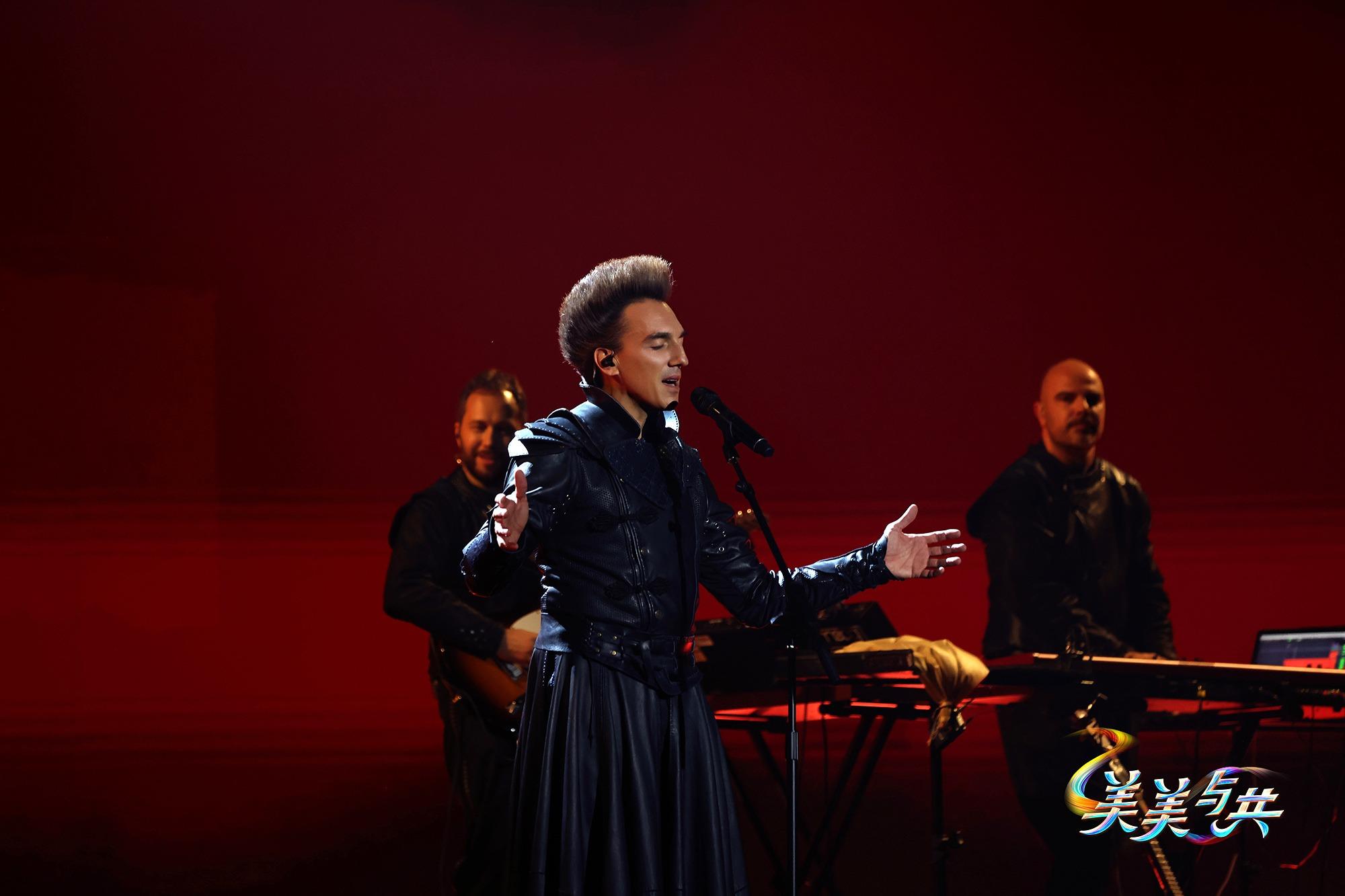 Hong Kong actor Wong Cho-lam (second left, front) collaborates with Laotian singer Atisal Ratana (second right, front) in a performance on the program The Beauty of Shared Arts. (PHOTO PROVIDED TO CHINA DAILY)
Hong Kong actor Wong Cho-lam (second left, front) collaborates with Laotian singer Atisal Ratana (second right, front) in a performance on the program The Beauty of Shared Arts. (PHOTO PROVIDED TO CHINA DAILY)
Approximately 80 years ago, on a winter night in Almaty, in what is now Kazakhstan, musician Bakhitzhan Baykadamov was taking a stroll through the city's streets.
He was captivated by an unusual sight near a theater: a slender Chinese man sitting on his suitcase, clad in a light sweater and cradling a violin.
Even though a language barrier separated them, it was evident that they both shared a deep passion for music.
Baykadamov, with a kind heart, made a compassionate decision. He welcomed this cold and destitute foreigner into his home and offered him a meal. Little did he know that the individual he had extended his hand to was the renowned composer Xian Xinghai (1905-45).
As war erupted between Nazi Germany and the former Soviet Union in 1941, Xian was in Moscow working on a documentary for the Communist Party of China under the pseudonym Huang Xun. He was compelled to abandon his mission and evacuate the city, leaving him stranded in Almaty, a place where he had no acquaintances, no shelter, or route back home.
Over the following year, as Xian was accommodated by Baykadamov, the two musicians found a way to communicate. Through the universal language of music, they could transcend linguistic boundaries.
During this period, Xian drew inspiration from the Kazakh national hero, Amangeldy, and composed an eponymous symphonic poem. This piece served as a source of motivation for those battling against the forces of fascism. He also wrote over 20 Kazakh folk songs.
Today, Almaty features two parallel avenues respectively named after the two musicians. The avenues serve as a tribute to the friendship between Baykadamov and Xian.
In a recent television program titled The Beauty of Shared Arts, this tale of China-Kazakh friendship has been brought to life, with an artistic expression of their bond. Chinese pianist Lang Lang collaborated with the Beijing Symphony Orchestra to perform a suite composed by Xian, embellished by the exquisite harmonies of Kazakh singer Dimash Kudaibergen. This modern portrayal of the musical friendship between China and Kazakhstan underscores the enduring connections that music can forge among individuals from diverse cultures.
 Serbian singer Slobodan Trkulja performs a song on the program. (PHOTO PROVIDED TO CHINA DAILY)
Serbian singer Slobodan Trkulja performs a song on the program. (PHOTO PROVIDED TO CHINA DAILY)
The program was produced by the China Media Group and the Ministry of Culture and Tourism to commemorate the 10th anniversary of the Belt and Road Initiative. The program invited individuals from countries involved, such as Serbia, Kazakhstan and Laos, to create a comprehensive narrative of cross-cultural interaction, open collaboration and the rich tapestry of multicultural exchange among the countries.
Under the theme of the "Cultural Silk Road", the program intends to invite renowned theater troupes and artists from all over the world to perform innovative fusion art.
More than just a showcase of the stage arts, the program encompasses a variety of elements, including interviews, exhibitions and documentaries. It delves deeper into the lesser-known historical narratives behind the scenes.
For example, in 2016, under the guidance of the BRI, China's HBIS Group acquired Zelezara Smederevo, a struggling Serbian steel manufacturing conglomerate headquartered in Belgrade, which had faced seven consecutive years of losses. They established HBIS Group Serbia Iron & Steel.
Through careful management, in less than half a year, the mill turned its losses into profits, contributing to the country's economic growth.
Employees of Zelezara Smederevo were also invited to the program to share firsthand accounts of the transformation of their lives.
Additionally, a dance drama, titled Steel Symphony, takes center stage in the program, emphasizing percussion and contemporary dance as its main components. Complemented by 3D visual effects, the performance offers an artistic interpretation of the closure of the old steel mill and the inauguration of the new one.
"Regardless of a culture's origin, it is deeply connected to the land and its people. This program delves into life in the countries involved in the BRI, highlighting representative individuals whose stories showcase the friendship with China, and which represent universal human emotions," says Hu Zhifeng, a professor with the School of the Arts and Communication in Beijing Normal University.


